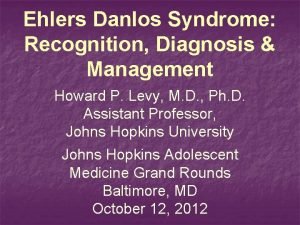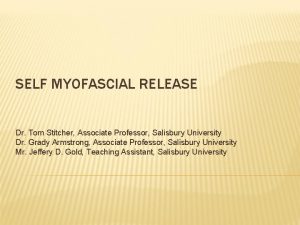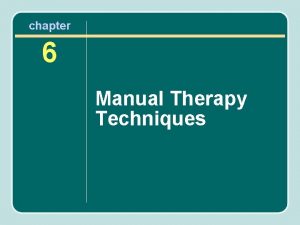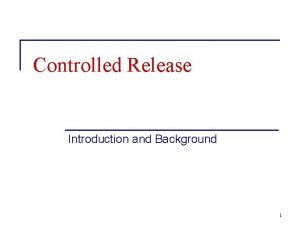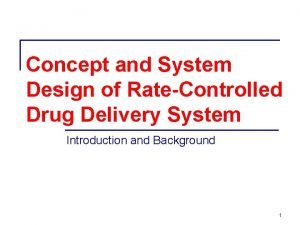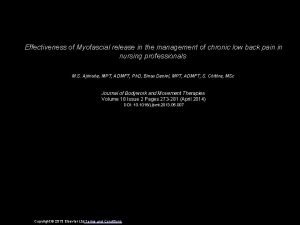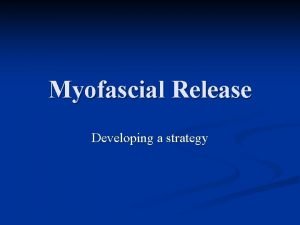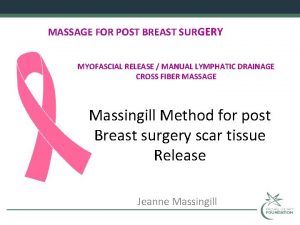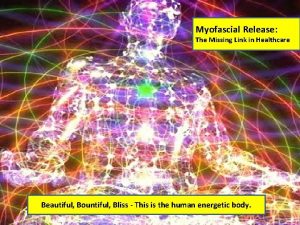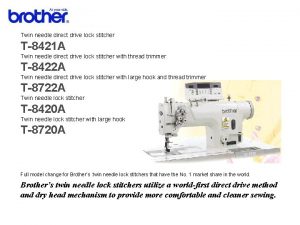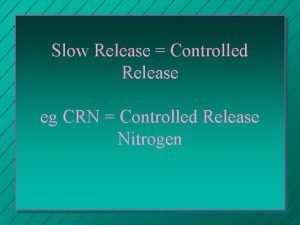SELF MYOFASCIAL RELEASE Dr Tom Stitcher Associate Professor








- Slides: 8

SELF MYOFASCIAL RELEASE Dr. Tom Stitcher, Associate Professor, Salisbury University Dr. Grady Armstrong, Associate Professor, Salisbury University Mr. Jeffery D. Gold, Teaching Assistant, Salisbury University

SELF MYOFASCIAL RELEASE SMR is a growing trend It has far reaching benefits The major use in the past has been in the physical therapy setting… Taking a foot hold in the fitness/sport/training setting SMR is being used for both warm-up and cooldown in fitness and sport training…to improve R. O. M. or to promote healing.

SMR Myofascial Release has been referred to as “stretching of the fascia. ” You should “stretch” only small areas at a time. Self Myofascial Release has gained in popularity… Foam rollers, massage balls, and many other manufactured or home made items are becoming as common as exercise equipment.

MUSCLES & FASCIA Every organ and muscle in the body is covered by connective tissue called fascia. Muscle consist of individual muscle cells or muscle fibers bundled together by fascia.

ADHESIONS When muscle fibers are repeatedly exposed to exercise strain or injury the fascia develops adhesions… Fascia becomes short, tight, dense or knotted. Adhesions often cause decreased blood flow to the muscles and can be painful to the touch.

MR Myofascial Release: Seeks to unlock the tension in the fascia MR loosens and relaxes muscles by applying gentle, sustained pressure and gentle manipulation. It helps to soften and lengthen the fascia by breaking down the adhesions. It is used to reduce soft-tissue stiffness and aid in post-workout recovery. The more dense the “tool” the more pain you might experience. Progress from a short “roll” to a longer time.

MR CONTINUED – TOOLS IN TOOL BOX MR traditionally required the assistance of a therapist. We now can perform many of these techniques on our own. Some of “The Tools”: Rollers (all shapes and sizes and density) Balls (a. k. a. pain balls) “The Stick” ETC.

REFERENCES Common Self Myofascial Release exercises… www. salisbury. edu/campusrec/strength/foam _rolling. pdf Mr. Matt Nein, Strength and Conditioning Coach, Salisbury University Starrett, Kelly w/ Glen Cordoze. Becoming a Supple Leopard. ISBN 13: 976 -1 -936608 -584
 Myofascial release floyd county
Myofascial release floyd county Myofascial release salisbury
Myofascial release salisbury J stroke myofascial release
J stroke myofascial release Promotion from associate professor to professor
Promotion from associate professor to professor Ocusert definition
Ocusert definition Extended release vs sustained release
Extended release vs sustained release Sustained release vs extended release
Sustained release vs extended release How do you differentiate an actual self from an ideal self
How do you differentiate an actual self from an ideal self Symbols in the devil and tom walker
Symbols in the devil and tom walker
